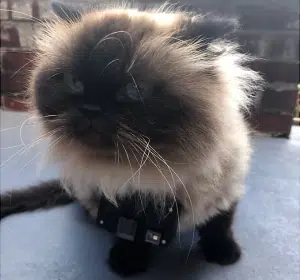Have you ever wondered what your cat does when they’re out on the prowl? There is a study currently being done on exactly that.
Dr. Elizabeth Gow is an adjunct professor at the University of Guelph and a movement ecologist with Birds Canada and is studying the secret life of cats.
“The questions that we’re really looking at answering is the impact on birds and how many birds and small mammals that cats are capturing and hunting, but also some other aspects such as their welfare. Are they coming in contact or potentially crossing busy roads that they could be hit by cars? Or are they meeting coyotes or other things that could be hazardous to them?” Gow says.
Hunting birds is a very common cat behaviour. Often times your cat will come home with a dead bird after they have been out adventuring.
“In Canada, we’re looking at cats killing anywhere from 150 to 350 million birds a year, which is an astronomical number and it’s really hard to see what that means. When we see a cat hunting or bringing a bird home, that scale to us is a single bird. But when we multiply it across the country, it’s absolutely huge,” says Gow.
This study is four years in the making. The team started to build small cameras and sent about 10 out on cats 2 years ago. The test cameras were bigger than they are now with the purpose of seeing if the work was possible.
After the preliminary study was over, they were able to see what was needed on the cameras and started looking at how they could improve. They used this process to get to the cameras they are using today.
“The camera is about the size of an egg, so it fits in the palm of your hand. It features advanced night vision technology and it has a little GPS inside that records the location of the photos. It really allows us to see what the cats are seeing,” Gow says.
The cameras take pictures when the cat is moving but turn off when the cat is still. The pictures that are taken can then be put into a computer program where they will be made into a video, allowing them to see what the cat sees at about the same time span.
Anybody interested in volunteering their cat for this study can fill out the survey on their website.
Below is an example of the completed videos after the images are captured.








